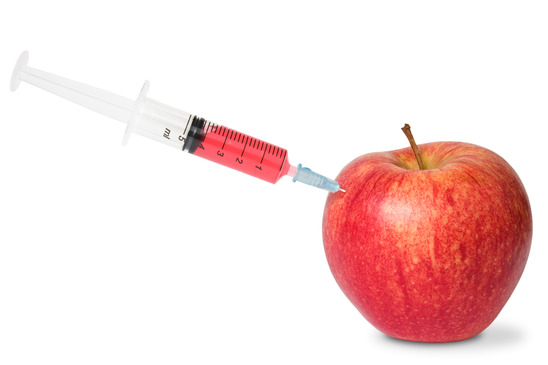The Dangers of Drugs
|
Reading time: 7 minutes
|


Hidden Drug Dangers That Nobody Talks About
You’ve just had an appointment with your doctor. In your hand, you carry a little slip of paper for the pharmacist. A quick visit to the local drugstore, or an easy online order, gets you the medication you need. After that, it’s just a matter of following the instructions.
Drug safety is the furthest thing from your mind.
After all, your doctor wouldn’t prescribe dangerous medication, right?
Unfortunately, sometimes doctors do without realizing it.
Death Can Be In the Mix
What medical professionals call drug-drug interactions, or DDI, is a growing problem in America. Not to mention other types of dangerous interactions between drugs and herbal supplements, or even food.
These interactions are not to be taken lightly.
Here’s a great example why. Antidepressants known as SSRI’s (Paxil and Zoloft) can cause big problems when mixed with the herbal supplement St. John’s Wort. Now, naturopaths claim that St. John’s Wort can be used to boost one’s mood, so it makes sense for someone suffering from depression to want to try it.
But if you’re on Paxil or Zoloft, don’t.
This drug interaction can cause Serotonin Syndrome, which is an overabundance of serotonin in the brain. Symptoms can include:
- agitation,
- rapid heartbeat,
- loss of coordination,
- hallucinations,
- muscle spasms,
- tremors,
- and confusion.
Without treatment, including at least 24 hours in the hospital, Serotonin Syndrome can kill you.
Another example mixing Viagra and nitrates. Nitrates are used to prevent heart attacks and reduce angina. Viagra… well, most people know what Viagra does. Mix the two and you get severe drops in blood pressure in patients. Drops steep enough to kill.
Clearly, drug interactions can cause serious health problems. This raises the question: who should be responsible for preventing them?
How to Stay Safe
Many experts say the responsibility rests squarely on the patient’s shoulders. Tell your doctor about all of the medications you are taking as well as any herbal supplements or vitamins. Read the warning labels and safety information included with your prescription.
But still, you are the patient. You are not the expert.
A 2010 article in the Journal of Young Pharmacists points out that drug interactions can be caused by a wide variety of issues. These can include other medications for different illnesses, other medications’ side effects, your genetics, and more.
No one expects the average person to know all the ways their body, their disease, and their medication will interact. If you had that kind of knowledge, you could save your co-payments and treat your own medical conditions.
But, that doesn’t mean patients don’t have a responsibility to be honest when their doctors or pharmacists ask about the medications and supplements they’re taking.
The final responsibility for dangerous drug interactions should be with your doctor and your pharmacist: the two people who should know the most about these potential risks. But still, read up on the side effects and potential problems linked with your medications.
Forward Thinking
The increased use of electronic health records aim to make it easier for doctors and others in your health care team to follow your medical history. And that includes a list of medications you’re on.
An alert system could be used to notify doctors, nurses, or even pharmacists about potential negative interactions between your new medicine and existing prescriptions. And coming soon, the Affordable Care Act will take steps to reduce paperwork in the medical profession, streamlining the whole process.
Even with new technology, be open and honest with your doctor. Take the time to educate yourself about your condition and the treatment your doctor recommends. And never hesitate to ask questions about things that affect your life.

The FDA: Drug Company Puppets or Public Safeguards?
When I say ‘FDA’, what comes to mind?
A lot of people will think about a big, faceless agency that doesn’t do enough.
But, the fact is that most people know nothing, or very little, about this incredibly active group of individuals in America. They don’t know how the FDA works, what they actually do, or even how they can get involved to make America safer.
Like any big system, it has its flaws. But, the FDA actually protects consumer health and safety like nobody else can.
More Than 100 People Had to Die for the FDA to Appear
What would later be called the FDA first formed in 1927. It was a small part of the United States Department of Agriculture (USDA).
Unfortunately, back then the agency’s power was hamstrung by 20-year-old laws. They couldn’t stop companies from selling mascara that caused blindness. Or drinks that had radioactive chemicals in them.
Things changed in 1937. The S. E. Massengill Company launched “Elixir Sulfanilamide.” No safety testing was required by law, so none was done.
Unfortunately, it was made with diethylene glycol, which is used today in brake fluid, wallpaper stripper, and some fuels. It’s very toxic. The S. E. Massengill Company probably included it because it tastes slightly sweet.
The product killed more than 100 people in the United States.
One year later, the FDA got the boost in power they needed.
Little Public Trust
Although the FDA is actually a main line of defense against dangerous food or drugs that don’t work, most Americans do not trust them.
Back in the 1970’s, polls showed that more than 80% of Americans trusted the FDA. In the last few years, that number has dropped to just 36%.
What happened?
For one, many Americans don’t really know what’s going on. They don’t understand what the FDA does or how it operates.
In a separate poll conducted in 2007:
- Only 54% of Americans knew the FDA was responsible for approving all prescription drugs and was wholly funded by the federal government.
- Over one-third believed drug companies, or drug companies and the government, funded the agency.
- Thirty-seven percent believed the FDA only approved certain types of drugs.
Of course, recalls like what happened with Vioxx have not helped matters.
Vioxx received FDA approval in 1999 as a treatment for inflammation. However, some of the studies suggested Vioxx might increase heart attack risks among users. In fact, the medication is now believed to have been related to the deadly heart attacks suffered by thousands of patients in the United States.
These types of cases are a big blow to the public’s trust in the FDA.
Problems at the FDA Office
Part of the FDA’s problem is work load. They regulate a huge number of consumer goods. About 25% of all the items people purchase in the United States must be approved or inspected by the FDA.
That’s 1 in 4 of all the things you buy.
That’s why the FDA relies, in part, on consumers.
In June 2012, a packaging problem with a brand of oral contraceptives led to a recall. The problem was identified and reported by a consumer. Certain pills were in the wrong row, and labeled incorrectly.
The FDA encourages consumers to report not only packaging problems but also adverse side effects and drug interactions. Some side effects and interactions may not be identified in the drug’s safety information.
Ongoing drug safety monitoring relies on the efforts of patients, doctors, and pharmacists to keep the agency aware of problems as they arise. Safety testing can only go so far, especially when the FDA has to process as much as it does.
How Can I Do My Part?
You can report problems to the FDA through their website, by faxing or mailing a form to the FDA (the form is available on the agency’s website), or by calling your state’s district FDA office.
If you are concerned about problems with the FDA, encourage political representatives in your area to address those issues and to make drug safety a significant political issue.
Information provided on this website is for general purposes only. It is not intended to take the place of advice from your practitioner







